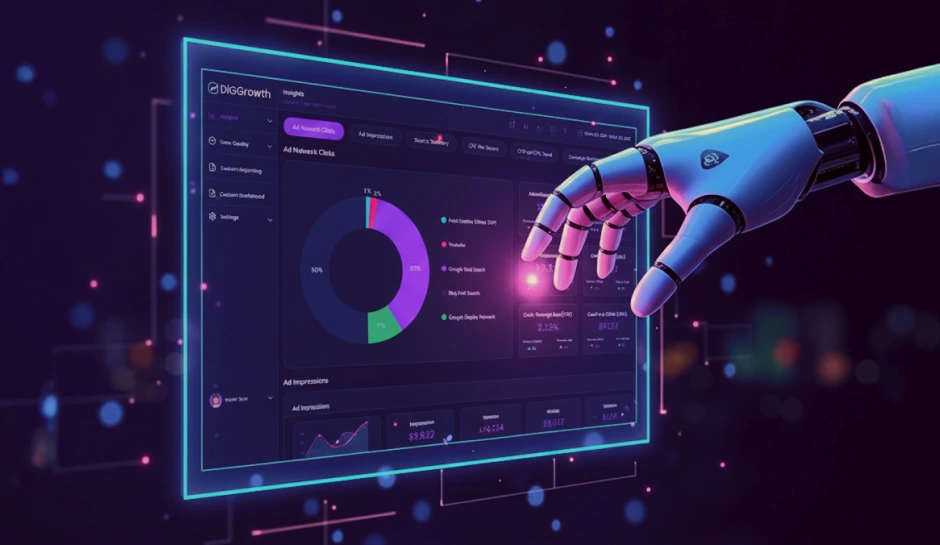
The Click-through Attribution Advantage: Data-Driven Marketing Made Simple
Understanding campaign performance is key to improving marketing strategies. Click-through attribution focuses on the last interaction that drives conversion, offering businesses clear insights into which campaigns deliver the most value, helping them refine strategies for better results.
In a time where marketing budgets are scrutinized more than ever, understanding which strategies genuinely drive results is no longer optional—it is critical. Among the various attribution models available, Click-through Attribution is a practical and effective method for measuring campaign performance. This model simplifies the evaluation of digital marketing efforts by crediting a conversion to the last ad or touchpoint that earned a user’s click.
While some argue that click-through attribution can oversimplify user behavior, its precision in identifying which campaigns generate tangible actions makes it a cornerstone for many organizations. Whether it is optimizing ad spend, refining content strategies, or forecasting ROI, businesses that leverage click-through attribution can confidently make data-driven decisions.
This blog explores how click-through attribution works, why it matters, and how you can use it to refine your marketing strategy for measurable growth.
How Click-through Attribution Works
Click-through attribution operates on a straightforward principle: it assigns 100% of the credit for a conversion to the last ad or touchpoint clicked before the user completes the desired action. This makes it an ideal model for businesses aiming to measure the immediate impact of their campaigns, especially in environments where clicks directly translate to sales, sign-ups, or other key performance indicators.
To understand its mechanics, consider a scenario where a user interacts with multiple touchpoints during their buyer journey:
- They see a display ad but do not take action.
- They receive an email campaign and click through to visit the website.
- Later, they click on a paid search ad and complete a purchase.
In this case, the paid search ad receives full attribution for the conversion, as the final click led to the desired outcome.
How It Differs from Other Attribution Models
- First-click attribution:
- Multi-touch attribution:
- View-through attribution:
Credits the first touchpoint (e.g., the display ad) instead of the last.
Distributes credit across all touchpoints involved in the user journey.
Considers impressions where no click occurred but the user converted later.
By focusing exclusively on the final click, click-through attribution provides clarity and simplicity, especially for businesses prioritizing direct-response campaigns. However, its reliance on the last-click approach makes it crucial to pair it with broader models when analyzing long-term brand-building strategies.
Pro Tip- Click-through attribution is particularly effective when supported by robust tracking tools, which enable businesses to map user behavior across devices and channels. When executed correctly, click-through attribution reveals which campaigns drive clicks and highlights the pathways most likely to convert.
Key Advantages of Click-through Attribution
Click-through attribution is a practical and impactful model for marketers, offering clarity and simplicity in campaign analysis. Here are its most compelling advantages:
1. Clarity in Identifying Campaign Success
With click-through attribution, businesses can pinpoint which campaigns or ads drive conversions. This model eliminates guesswork and highlights top-performing strategies by focusing on the final touchpoint that leads to action. Marketers clearly understand what works, enabling them to replicate success across other campaigns.
2. Efficient Resource Allocation
Click-through attribution makes it easier to identify where marketing spend yields the highest returns. By attributing credit to campaigns that lead to measurable actions, businesses can allocate resources more effectively, ensuring investments are directed toward channels and strategies that deliver the most value.
3. Actionable Insights for Fast Strategy Shifts
The model’s straightforward approach enables marketers to make quick, data-driven decisions. Real-time click data provides insights into what is resonating with audiences, allowing for rapid adjustments to ongoing campaigns. This agility is particularly valuable in fast-paced industries where trends and consumer behaviors change frequently.
4. Better Alignment with ROI Goals
By focusing on the metrics that matter—clicks leading to conversions—click-through attribution ensures a strong connection between marketing efforts and business outcomes. This alignment simplifies ROI measurement and helps decision-makers assess the true impact of their campaigns without unnecessary complexity.
Implementing Click-through Attribution: A Practical Guide
Implementing click-through attribution effectively requires more than just adopting a tracking model—it involves strategic planning, integrating the right tools, and fostering a culture that values data-driven decision-making. For executives overseeing this shift, it is essential to take a structured approach to ensure the model’s success across all levels of the organization. Here’s a deeper dive into key considerations for implementation:
Data Integration: Ensuring Seamless Data Flow Across All Marketing Platforms
Successful click-through attribution depends on a robust data infrastructure ensuring seamless data flow across multiple marketing platforms. Executives must focus on integrating data from various sources, which typically include:
- Ad Platforms:
- Web Analytics Tools:
- CRM Systems:
- Email & Marketing Automation Platforms:
Key ad platforms like Google Ads, Meta Ads, and Bing Ads provide essential click tracking. However, it’s crucial to integrate these with other platforms to measure true performance across channels to gain a holistic view. Integration ensures that click data is captured consistently from ads to final conversions, reducing attribution gaps.
Platforms like Google Analytics or Adobe Analytics are crucial for tracking website user behavior. The integration allows businesses to attribute conversions to specific touchpoints in the user journey, like landing page interactions or product views.
Connecting click-through attribution data with Customer Relationship Management (CRM) systems (e.g., Salesforce, HubSpot) lets businesses see how early-stage engagement translates into long-term relationships and sales.
For email marketing campaigns, integrating email platforms (like Mailchimp, ActiveCampaign) with click-through attribution data ensures that email-driven conversions are captured and attributed correctly.
The key challenge is ensuring all systems speak to each other—businesses need integration tools, such as APIs and ETL (Extract, Transform, Load) processes, to facilitate smooth data exchange between platforms. Additionally, integrating third-party data sources and maintaining a single customer view across systems helps close attribution gaps and ensures more accurate performance tracking.
Choosing the Right Tools
To implement click-through attribution effectively, choosing the right tools is vital. The landscape of marketing technology is vast, and selecting the appropriate tools ensures that businesses can capture, analyze, and interpret data accurately. Key tools include:
Marketing Analytics Platforms
Platforms like DiGGrowth, HubSpot, Google Analytics 360, Marketo, and Adobe Analytics provide comprehensive tracking solutions, enabling businesses to collect click data and assign attribution automatically. These tools also offer in-depth reporting and dashboards, which help decision-makers analyze the impact of campaigns in real time.
CRM Integrations
Connecting attribution data with CRM systems like Salesforce or Zoho CRM is essential for understanding the downstream effects of clicks. By linking attribution insights with customer acquisition data, businesses can track the full customer journey from click to conversion and measure each lead’s lifetime value (LTV).
Data Management Platforms (DMPs)
Oracle DMP and Adobe Audience Manager consolidate audience data across multiple touchpoints. By leveraging a DMP, businesses can create more accurate customer profiles, improving attribution by identifying the most relevant interactions that lead to conversions.
Attribution-Specific Platforms
Platforms like Hunch or Rockerbox offer advanced attribution capabilities for organizations that need highly customized attribution models. These platforms go beyond the basic last-click model and can provide deeper insights into multi-channel and cross-device interactions.
Executives should prioritize scalability, ease of integration, and flexibility when selecting tools. The tools must accommodate future growth and seamlessly integrate with existing systems, ensuring a smooth implementation process.
Building a Data-Driven Culture
Implementing click-through attribution is not just a technological shift; it requires creating a data-driven mindset across the organization. As an executive, fostering a culture that values data and its insights is crucial for long-term success. Here’s how to build that culture:
- Promoting Cross-Functional Collaboration:
- Training and Education:
- Establishing Clear KPIs:
- Communicating the Value of Attribution:
Marketing, sales, and IT teams should collaborate closely in defining the goals, processes, and metrics associated with click-through attribution. By involving all relevant teams, you ensure that attribution data is used to its fullest potential in optimizing customer acquisition and retention strategies.
Providing your teams with the right training is essential for effective implementation. Hold workshops or training sessions on interpreting attribution data and applying it to decision-making. Educating teams on how click-through attribution fits into the broader marketing strategy will help them understand its true value.
Leaders must ensure that the KPIs tied to click-through attribution align with the broader business objectives. Clear KPIs, such as cost per acquisition (CPA), conversion rates, and return on advertising spend (ROAS)—will help decision-makers use attribution data effectively.
Executives should clarify that attribution data is not just for marketing teams—it impacts overall business outcomes. Executives can ensure company-wide adoption of this data-driven approach by demonstrating how attribution helps maximize ROI, allocate budgets efficiently, and optimize campaigns in real-time.
Continuous Monitoring and Optimization
Click-through attribution is a dynamic process, and successful implementation requires ongoing efforts to ensure its effectiveness. The digital landscape is constantly evolving, and as customer behaviors, technologies, and trends shift, so must your attribution strategy. Here are key areas for executives to focus on:
Regular Audits
Attribution models should be regularly reviewed and refined to keep up with consumer behavior and marketing channel changes. Periodic audits are necessary to assess the relevance and accuracy of your attribution model.
This involves reviewing data collection methods, ensuring that all touchpoints are properly tracked, and evaluating whether the model aligns with the business’s marketing objectives. Audits help identify discrepancies, data gaps, or outdated assumptions, ensuring the attribution model reflects the most current customer journey.
Optimizing Based on Insights
Once data from attribution models is collected, the next step is turning these insights into actionable strategies. Executives must prioritize data-driven optimization across marketing channels.
This can include refining audience targeting based on click data, optimizing ad creatives that lead to higher engagement, or adjusting media buying strategies to focus on high-conversion platforms.
For example, if the attribution model reveals that specific ads generate more conversions than others, the marketing team can allocate more budget to those successful campaigns while tweaking or discontinuing underperforming ones.
Dynamic Campaign Adjustments
Real-time data analysis allows businesses to shift their strategies quickly to capture emerging opportunities. Whether it’s adjusting bidding strategies, reallocating budgets between channels, or refining messaging, being agile in your approach to optimization is essential.
Regular reviews and optimizations ensure the business maximizes its marketing ROI and remains competitive in the ever-changing digital space.
Adapting to New Trends
Marketing trends, tools, and customer behaviors evolve rapidly. Regular monitoring allows businesses to adapt to changes like emerging platforms, evolving user behaviors, or shifts in industry best practices. For instance, if a new social media platform begins to gain traction, executives can incorporate it into the attribution model to assess its impact.
Ensuring Compliance with Privacy Regulations
As data privacy concerns continue growing, businesses must ensure that their click-through attribution models fully comply with global privacy regulations. Non-compliance can lead to legal risks, hefty fines, and reputational damage. Executives must take the following steps to guarantee adherence to laws like the General Data Protection Regulation (GDPR) and the California Consumer Privacy Act (CCPA):
Obtaining Proper Consent for Data Collection
Before collecting any user data for attribution purposes, businesses must ensure that proper consent is obtained from users. GDPR and CCPA require businesses to inform consumers about the data collection type, its purpose, and how it will be used.
Marketers should integrate cookie consent management tools and transparent opt-in forms, allowing users to give explicit consent before tracking occurs. Clear, accessible privacy notices and consent banners can also help establish customer trust.
Anonymizing and Securing Customer Data
Click-through attribution models often rely on tracking customer touchpoints, but this data must be anonymized and stored securely to avoid violating privacy laws. Data should be stripped of personally identifiable information (PII) to maintain compliance. Additionally, businesses must ensure that all data is securely stored, using encryption and secure cloud solutions. Limiting access to sensitive data within the organization further enhances security.
Data Minimization
GDPR emphasizes the principle of data minimization, meaning that businesses should only collect and store the data necessary for attribution purposes. Executives must carefully evaluate what data is essential for measuring conversion paths and refrain from gathering unnecessary information that could increase compliance risks.
User Rights and Transparency
Executives must also ensure that their attribution models respect user rights as outlined in privacy regulations. This includes enabling users to access, correct, or delete their data upon request (a fundamental right under GDPR). Businesses should have processes in place to manage user data requests efficiently and communicate transparently about how data is used in attribution models.
Staying Updated with Regulations
Privacy laws continuously evolve, so businesses must stay informed about any changes or updates to data privacy regulations. Executives should regularly consult legal and compliance experts to ensure their attribution processes comply with new legislative requirements. This includes understanding the nuances of how regulations apply to cross-border data flows, cookies, and tracking technologies.
Building Customer Trust
Beyond compliance, prioritizing data privacy in attribution models fosters customer trust. Organizations can create stronger relationships with consumers and protect their brand reputation by implementing strong privacy measures and openly communicating data practices.
Key Takeaways
- Click-through attribution offers a simple yet effective way to evaluate campaign success by assigning full credit to the last touchpoint before a conversion.
- It provides actionable insights into which campaigns or ads drive conversions, allowing for more efficient marketing spend allocation.
- Real-time data analysis from click-through attribution enables businesses to adjust campaigns for optimal performance rapidly.
- By aligning directly with business outcomes, click-through attribution simplifies ROI measurement and ensures focus on high-impact strategies.
- Compliance with privacy regulations like GDPR and CCPA is essential in implementing click-through attribution to protect customer data and ensure trust.
Conclusion
Click-through attribution is a game-changer for businesses looking to make data-driven decisions with clarity and precision. By focusing on the last-click interaction, this model offers a streamlined approach to understanding which campaigns are directly responsible for conversions. This simplicity allows for more effective budget allocation and helps optimize ongoing campaigns in real-time, ensuring your marketing strategies stay agile and responsive.
However, it is vital to integrate the right tools, maintain a data-driven culture, and ensure continuous optimization to unlock the full potential of click-through attribution. With privacy regulations shaping the landscape, adhering to them while implementing click-through attribution further strengthens customer trust.
Ready to optimize your marketing strategy with click-through attribution?
Just write to us at info@diggrowth.com and we’ll get back to you.
Ready to get started?
Increase your marketing ROI by 30% with custom dashboards & reports that present a clear picture of marketing effectiveness
Start Free Trial
Experience Premium Marketing Analytics At Budget-Friendly Pricing.

Learn how you can accurately measure return on marketing investment.
Additional Resources
How Predictive AI Will Transform Paid Media Strategy in 2026
Paid media isn’t a channel game anymore, it’s...
Read full post postDon’t Let AI Break Your Brand: What Every CMO Should Know
AI isn’t just another marketing tool. It’s changing...
Read full post postFrom Demos to Deployment: Why MCP Is the Foundation of Agentic AI
A quiet revolution is unfolding in AI. And...
Read full post postFAQ's
Click-through attribution helps identify which channel is driving the final conversion. It works well in multi-channel marketing by focusing on the last click, though it should be paired with other models for a holistic view.
Yes, Click-through Attribution can be effectively applied in B2B and B2C marketing. It helps both types of businesses evaluate the immediate impact of digital touchpoints and optimize conversion strategies accordingly.
Cookies track user behavior, making Click-through Attribution possible. However, with privacy regulations like GDPR, businesses must ensure proper consent for cookie tracking and that data collection adheres to privacy standards.
Click-through Attribution primarily tracks digital interactions. Businesses can combine offline campaigns with other attribution models, like view-through or first-click attribution, to capture broader marketing efforts and tie them back to conversions.
Automation simplifies data collection, attribution analysis, and real-time reporting. Marketing platforms equipped with automation can efficiently track clicks and conversions, making attribution processes faster, accurate, and less resource-intensive.


